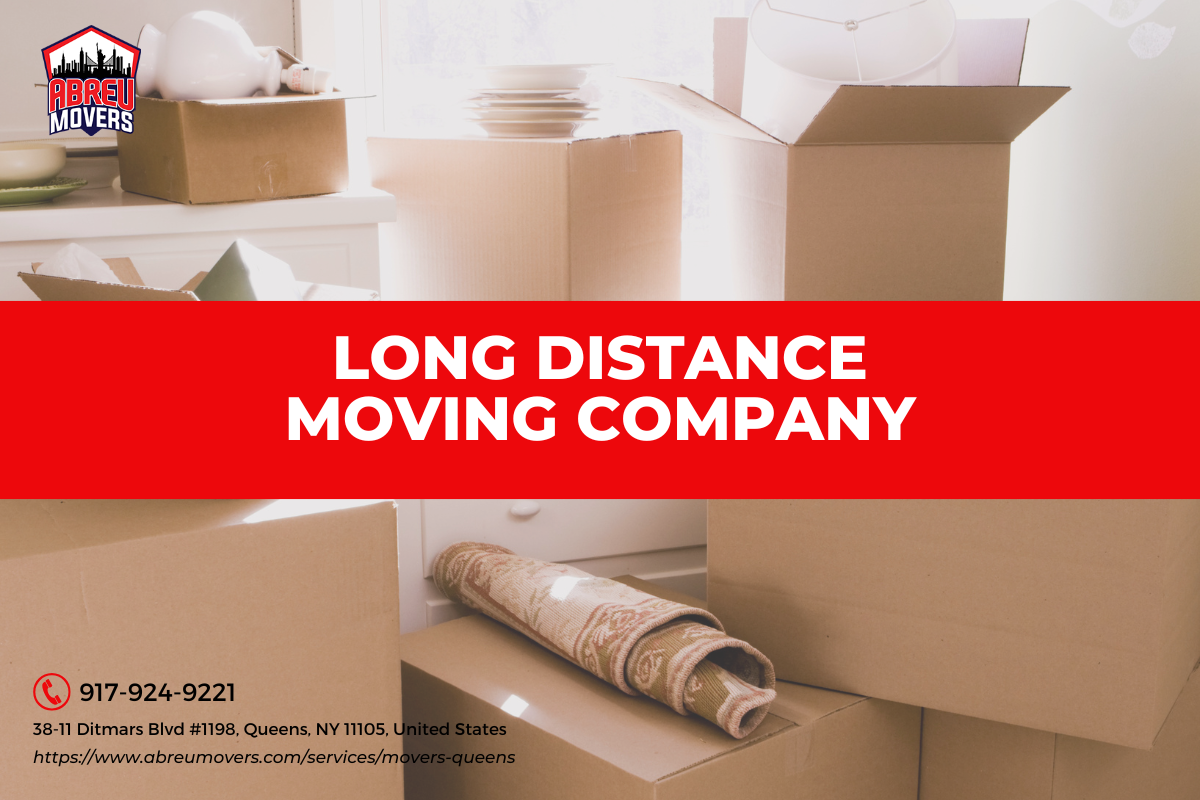


Introduction
When it comes to relocating, understanding the nuances between interstate and intrastate moves is crucial. Whether you're moving across state lines or just a few blocks away, the logistics can be vastly different. This comprehensive guide will delve into the intricacies of long-distance moving, exploring everything from the legal definitions to practical considerations for hiring movers. So, buckle in as we unfold the essential elements that differentiate interstate and intrastate moving.
Interstate vs. Intrastate Moves: Key Differences Explained
What is an Interstate Move?
An interstate move refers to relocating from one state to another. In essence, if your new home lies beyond the borders of your current state, you are engaging in an interstate move. This type of relocation commonly involves long distance movers who specialize in navigating the complexities associated with crossing state lines.
Key Characteristics of Interstate Moves:
- Distance: As the name implies, these moves generally span considerable distances. Regulations: They are governed by federal regulations, making them subject to various laws enforced by agencies such as the Federal Motor Carrier Safety Administration (FMCSA). Cost Considerations: Interstate moves often incur higher costs due to additional regulations and logistical challenges.
What is an Intrastate Move?
Conversely, an intrastate move occurs within a single state's borders. If you’re moving from one city to another within your state—say from Los Angeles to San http://andersonkbau519.tearosediner.net/packing-hacks-from-professional-long-distance-movers Francisco—you are undertaking an intrastate move.
Key Characteristics of Intrastate Moves:
- Simplicity: Generally less complicated than interstate moves. State Regulations: Governed primarily by state laws rather than federal regulations. Cost-efficient: Typically more affordable due to fewer regulatory hurdles.
Legal Implications of Each Move Type
Federal Regulations for Interstate Moves
Moving companies that engage in interstate moves must adhere to specific federal guidelines. The FMCSA outlines safety standards and ensures consumer protection during long-distance relocations. Important aspects include:
- Licensing: A valid DOT number is required for moving companies operating across state lines. Insurance Requirements: Higher insurance coverage mandates apply.
State Regulations for Intrastate Moves
Intrastate movers have more flexibility but must comply with local laws regarding:
- Licensing Requirements: These may vary significantly between states. Insurance Coverage: Often less stringent than those for interstate moves.
Understanding Costs: Interstate vs. Intrastate Movements
Cost Factors in Interstate Moving
The costs associated with interstate moving can skyrocket due to various factors:
Distance Traveled Weight of Belongings Time of Year Special Services Needed (packing, storage)To give you a clearer picture, here’s a comparison table:
| Factor | Interstate Move | Intrastate Move | |-----------------------------|-----------------------|-----------------------| | Distance | Long-distance | Short-distance | | Regulatory Costs | Higher | Lower | | Average Cost | $2,000 - $5,000 | $500 - $2,000 |
Cost Factors in Intrastate Moving
On the other hand, when it comes to intrastate moves:
They tend to be more predictable in terms of costs. There are fewer unexpected fees, making budgeting easier.Types of Services Offered by Movers
Long Distance Moving Services
Long distance moving companies offer a range of services tailored specifically for individuals relocating across state lines:
- Full-service packing Loading/unloading Storage options
These services ensure that your belongings arrive safely at your new home without any hassle on your part.
Intrastate Moving Services
In contrast, intrastate moving companies often provide essential services such as:
- Loading/unloading assistance Local transport Packing materials
While they may not offer extensive services like their interstate counterparts, they effectively handle local logistics.
Finding a Reliable Moving Company
Questions to Ask Long Distance Movers
When selecting a long distance mover—especially if you're considering a queens long distance moving company—it's essential to ask pertinent questions like:
Are you licensed and insured? What is included in your quote? How do you handle delays?This ensures you pick a reputable mover who complies with all legal requirements.
Questions for Intrastate Movers
For those opting for intrastate relocation, consider asking:
What are your rates based on? Do you provide packing services? Can I see customer reviews?By doing so, you'll be better equipped to make an informed decision.
Timing Your Move: Best Practices for Long Distance Relocations
Planning ahead can significantly impact both cost and convenience when it comes to long distance moving.
Ideal Times for Moving Interstate
Generally speaking:
- Avoid peak seasons such as summer unless absolutely necessary.
Consider mid-month or weekdays as potential times for cost savings; demand tends to decrease during these periods.
Best Timing Strategies for Intrastate Moves
Similar principles apply:
Weekdays often yield lower rates. Consider off-season months (fall/winter) for potential deals.Packing Tips: Preparing for Your Move
Packing efficiently can reduce stress during either type of move; here are some strategies:
Packing Essentials for Long Distance Moves
Use sturdy boxes labeled clearly. Protect fragile items with bubble wrap or blankets. Keep important documents accessible; avoid packing them away!Packing Essentials for Intrastate Moves
While similar packing strategies apply:
You might opt for lighter boxes since the distance is shorter. Organize items by room; it’ll make unpacking easier!Storage Solutions While Moving: A Comparison
Sometimes circumstances dictate temporary storage solutions during transitions; let’s explore options available!
Storage Options During Interstate Moving
Many long distance movers offer storage facilities that cater specifically to clients needing short-term solutions while transitioning between homes.
Key Benefits include:
Security Climate control options
These aspects ensure your belongings remain protected until you're ready!
Storage Options During Intrastate Moving
Local movers typically provide flexible storage arrangements too! However:
Considerations include:
Availability may be limited 2 Potentially lower security measures than larger facilitiesUnderstanding Insurance Coverage When Choosing Movers
When selecting either type of mover—interstate or intrastate—always inquire about insurance coverage options!
Insurance Considerations For Long Distance Movers
Federal law requires long distance movers provide basic liability coverage; however:
You may want additional coverage depending on item value! Ensure clarity concerning policy terms before signing contracts!
Insurance Considerations For Local Movers
Local movers might feature varying levels of insurance protection based on company size and offerings—be sure review specifics closely!
Frequently Asked Questions
What defines an interstate move?
An interstate move occurs when relocation takes place from one state to another and is regulated by federal authorities like FMCSA.
What characterizes an intrastate move?
An intrastate move involves relocating within a single state's borders and is primarily subjected to local laws rather than federal rules.
How do costs compare between interstate and intrastate moves?
Costs typically increase with longer distances due primarily due regulatory requirements associated with traveling across state lines versus staying within one area where less regulation applies makes overall expenses lower!
Is it necessary to hire professional movers for both types of moves?
While hiring professionals isn't mandatory—it certainly simplifies logistics immensely! Engaging experienced teams ensures efficiency whether going far away or simply down the road!
Can I use the same packing strategy regardless of my move type?
Absolutely! Fundamental principles behind effective packing remain consistent across both types—but minor adjustments based on distance traveled could optimize processes further!
How does timing influence overall costs associated with my upcoming relocation?
Timing plays a crucial role; avoiding peak seasons (like summer) along with weekday scheduling can sometimes result in significant savings over traditional busy periods!
Conclusion
Navigating through the complexities of relocations can feel overwhelming at times—but understanding the distinctions between interstate vs.intrastated movements helps clarify matters tremendously! Whether you're gearing up for cross-country adventure or setting sights on nearby prospects—knowledge truly empowers decisions leading toward successful transitions ahead! Remember always take time research thoroughly select reliable partners throughout journey ensuring smooth sailing all along way! Happy moving!